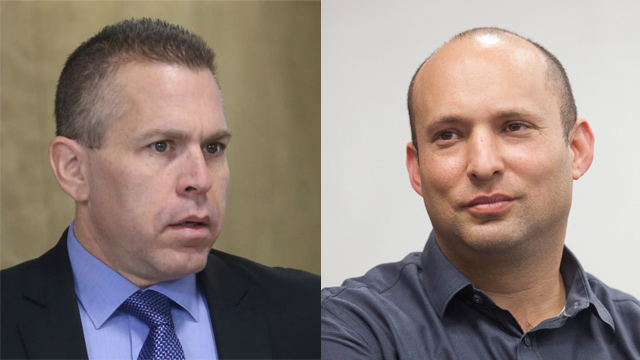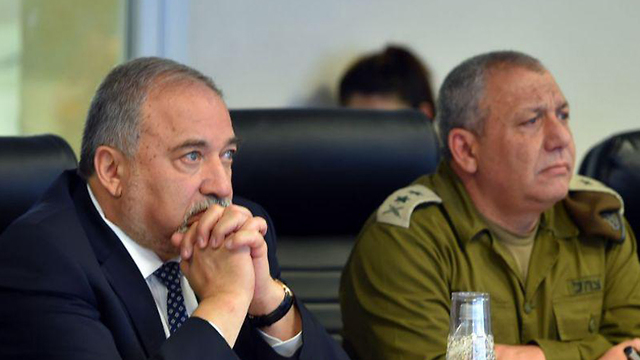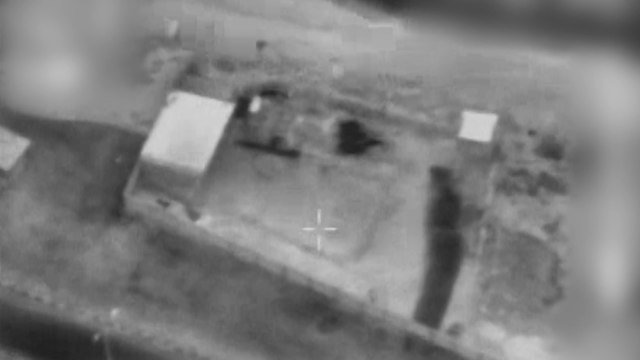
Following ministers’ demands, IDF steps up response to kite terrorism
Analysis: Although incendiary kites and balloons aren’t launched directly by Hamas, the Israeli army targeted military ‘assets’ of the strip’s sovereign and ruling power on Sunday night to make Hamas stop children and youth from dispatching kites. If it fails to do so, the IDF’s next target in Gaza will be people.
Not only did the army step up the severity and extent of its response, it basically adopted a demand made by some cabinet ministers to treat the kite terrorism as the high-trajectory terrorism of rockets and mortar shells fired from the strip by the Palestinian organizations.
The IDF responded to the launch of dozens of kites and 17 fires sparked by incendiary kites and balloons on Sunday just like it responds to the rocket fire by rebel organizations. In this case too, the idea is to target military “assets” of the strip’s sovereign and ruling force, although the kite terrorism isn’t operated by Hamas. It is mostly performed by “rebel” children and youth.
If Hamas is the strip’s sovereign power, it must also take responsibility for the actions of children and youth who are allegedly unrelated to the terror organization but receive encouragement and inspiration from Hamas. Their activities cause damage and, in some cases, could even threaten lives in Israel.
The Palestinian Islamic Jihad fought back with measured and intentionally inaccurate rocket fire. At the moment, both Hamas and the other Palestinian organizations have an interest in containing the event. So does the IDF. The army doesn’t want to bring about an escalation that would eventually force it to launch a major battle in Gaza. Hamas and Islamic Jihad, in their current situation, have no incentive to enter a battle from which they will emerge with no achievement and with major destruction in the strip and might even lose control of Gaza. The IDF has no interest in assuming responsibility for the welfare and economic and public administration of two million Palestinians in this case.
The coalition parties’ electorate
The Israeli government is facing quite a difficult problem right now. The public pressure is increasing, and although the real damage caused by the kite terrorism is still relatively small and there have been no casualties so far, the Israeli public is mostly the electorate of the coalition parties. That same public basically accepts Ministers Naftali Bennett and Gilad Erdan’s claim that the kite terrorism has a dangerous potential of deteriorating and eventually leading to fatalities as a result of fires that will spin out of control, as well as small explosive devices that are occasionally attached to the incendiary kites and balloons.

The gradually escalating retaliation policy adopted by the defense establishment, led by Defense Minister Avigdor Lieberman and IDF Chief of Staff Gadi Eisenkot, isn’t enough as far as they are concerned. The IDF responded to the kite terrorism by sending warplanes to carry out an airstrike just like it responds to the firing of rockets or mortar shells from the strip, but the hawkish ministers who spoke at the cabinet on Sunday won’t settle for that.
Minister Bennett, for example, is rightly saying that if the IDF detected a group of 16-year-olds planning to fire a Qassam rocket at Sderot, it would immediately attack them from the air and from the ground with the purpose of killing them. The education minister is demanding an identical policy towards kite launchers. To clarify this point, it’s important to distinguish between the IDF’s response policy, which began with concrete deterring fire, and escalated on Sunday night to airstrikes against Hamas’ military facilities.
Later on, if the kite terrorism continues, the IDF will move to a more serious retaliation policy, in which key kite terrorism and Hamas operatives will pay with their lives for this terrorism, which is seriously affecting the economic security and the Gaza vicinity residents’ sense of security.

But this policy, which is accepted by Defense Minister Lieberman, fails to satisfy Ministers Bennett and Erdan. They are demanding a change in the rules of engagement against the balloon and kite launching cells, and not just an overall deterrence policy in the strip which is supposed to make Hamas catch the kite launchers and stop them from carrying on instead of encouraging them, as Hamas and Islamic Jihad are doing right now.
Hamas is definitely capable of doing so, and Israel is specifically saying to the organization: You must prevent the kite launches just like you gained control over the rebels firing rockets. Otherwise, we may deteriorate into a comprehensive battle which you, Hamas, stand to lose.
Now, we have to wait and see how Hamas and Islamic Jihad will respond. If the kite terrorism continues, it’s quite possible that the IDF will decide to directly target adult key operatives who are inciting the children to dispatch the kites, as well as the teenagers launching the kites.
As we all know, the IDF doesn’t want to kill children who are participating in the kite launches for moral humanitarian reasons and because it is banned by international law. Those who kill children could be sued in the International Criminal Court in The Hague for war crimes.
The IDF’s intelligence measures, mainly unmanned aerial vehicles, have the ability to detect who is about to dispatch a kite or who is holding onto a string of a gas balloon attached to an explosive device, and selectively hit them.
There is no doubt that intentionally targeting the young Gazans who are inciting the children and providing them with material to build the kites will eventually achieve the required deterrence, but that will all happen down the road. At this time, we must wait and see whether the change in the IDF’s response will make Hamas prevent the launching of incendiary kites and balloons. If that doesn’t happen, people will start being targeted in the strip.



















